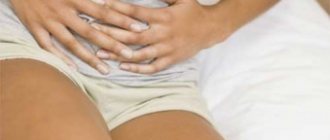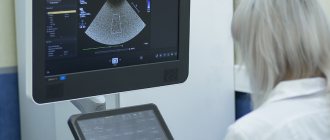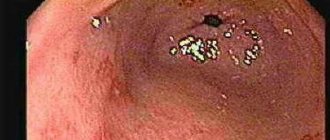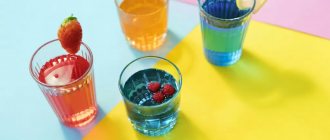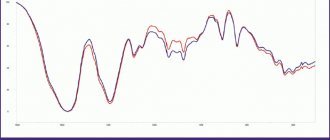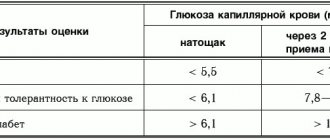Medical terminology is difficult for patients unfamiliar with anatomy to understand. An erroneous interpretation arises not only in the nature of the disease, but also in the definition of the diseased organ. This concerns the question: “What is stomach bulbitis?”
The name "Bulbit" refers to inflammation of the duodenal bulb, not the stomach. “Bulbus” is the rounded upper part adjacent to the pylorus of the stomach. General inflammation of the duodenum is called duodenitis, and bulbitis is actually its local variety.
Clinicians identify several variants of the disease, which is associated with the possibility of a differentiated picture during endoscopic examination. But, according to the International Classification, only two types of bulbitis are considered as separate nosological forms (ulcerative and erosive).
What it is?
Bulbit is an inflammatory disease of the mucous membrane of the duodenum (duodenum) with localization of the pathological process in its bulbar section. The common bile duct, the pancreatic duct, opens into the duodenal bulb. It is in this section that the acidic contents of the stomach are neutralized, and digestion processes begin under the influence of pancreatic and liver enzymes.
In gastroenterology, there is a tendency to reduce the frequency of Helicobacter-dependent bulbitis, which is associated with effective eradication therapy, but the frequency of idiopathic forms (not associated with H. pylori) remains high. In this case, complications that arise can threaten the patient’s life and require surgical intervention.
Reasons for development
The main cause of bulbitis is Helicobacter. Normally, there is a balance between the factors that increase and decrease the acidity of the stomach contents entering the duodenum.
When this balance is disturbed, hydrochloric acid damages the mucous membrane of the duodenum, which creates favorable conditions for Helicobacter, which are adapted to exist in an acidic environment.
In addition, the reasons for the development of bulbitis are factors that reduce the protective properties of the mucous membrane:
- immunity disorders,
- severe concomitant diseases,
- genetic, psycho-emotional and constitutional prerequisites.
Less commonly, bulbitis occurs when:
- Crohn's disease,
- Zollinger-Ellison syndrome,
- celiac disease;
- giardiasis;
- infection with worms;
- entry of a foreign body into the gastric cavity;
- poor nutrition;
- bad habits;
- consumption of hot food and drinks;
- gastritis;
- abuse of fatty, salty, spicy foods;
- food toxic infections.
Causes of erosive bulbitis:
- taking large quantities of medications;
- injuries and burns;
- alcohol abuse and smoking;
- postoperative consequences;
- reduced immunity.
Causes of superficial bulbitis:
- poor nutrition;
- stress;
- gastritis;
- chronic peptic ulcers;
- gastrointestinal infections;
- influence of pathogenic bacteria.
Causes of the chronic form:
- giardiasis;
- infection with worms;
- Crohn's disease.
Causes of the acute form:
- severe poisoning;
- medications;
- alcohol abuse;
- entry of a foreign body into the gastrointestinal tract.
Duodenum, 12 duodenum: treatment
The duodenum is an important organ of the digestive system and digestive behavior. The intestinal cavity is a reservoir into which digestive juices flow from the pancreas, liver and glands of the wall of the small intestine. Here, cavity digestion begins to take place, preparing the food bolus for the final breakdown of nutrients in the brush border of the cells of the duodenal mucosa. Between the microvilli, abundantly covered with enzymes, the bulk of the nutrients entering the human body are digested and absorbed at high speed. This digestion in the brush border is called parietal. The duodenum is richly innervated, especially in the initial section and in the area of confluence of the ducts from the gallbladder and pancreas. In the muscular lining of the intestine there are sensors for the rhythm of contractions of the entire small intestine.
The duodenum is also a hormonal organ. In the intestinal wall, under the influence of gastric contents, enterogastron is produced, which suppresses the secretion of gastric juice and relaxes the muscles of the stomach wall. Enterogastron prevents the digestive hormone gastrin from stimulating the activity of the gastric glands. Gastrin is produced by the pyloric zone of the stomach, which is close in origin and structure to the duodenum. The duodenum secretes pancreozymin, cholecystokinin, secretin and other hormones that regulate the activity of the pancreas and gallbladder, while simultaneously stopping gastric secretion. Digestive hormones from the duodenum stimulate the intestinal glands, which actively begin to secrete juice and stimulate intestinal motility. In the duodenum, hormones of general action are found that affect the body’s metabolism, endocrine, nervous, and cardiovascular systems.
Classification
The classification of bulbitis is based on the form of the disease and the types of its manifestation. There are two forms - acute and chronic. If treatment is started in a timely manner, the disease is cured completely and without consequences. Otherwise, it takes a chronic course, which causes a lot of trouble for the patient. Types of the disease differ in manifestations, severity and consequences.
Surface
This is one of the easiest and most treatable types of disease. It is called superficial bulbitis because it affects only the mucous membrane. At the same time, it becomes inflamed, soreness and swelling are formed, which makes it difficult for digestive juices to exit into the duodenum. As a result, there is stagnation of bile and a lack of enzymes for complete digestion of food.
Superficial bulbitis has two forms - acute and chronic. The acute form is most often infectious in nature. Chronic is characterized by alternating periods of exacerbation and remission.
Catarrhal
Catarrhal bulbitis is a more severe stage of the long-lasting superficial form of bulbitis. It is distinguished not only by swelling and inflammation, but also by dilation of capillaries on the surface of the mucosa, impaired intestinal motility, reflux of stomach contents into the esophagus (reflux), and the release of a large amount of cloudy mucus. Seasonal exacerbations are typical for catarrhal bulbitis. A long asymptomatic period is possible. The provocation is usually spicy food, stress or alcohol.
Focal
The doctor makes a diagnosis of “focal bulbitis” if the lesions of the bulb are not isolated, but cover entire areas of the mucous membrane. They can spread both towards the intestines and towards the stomach. Clinical manifestations are not specific. They are also characteristic of peptic ulcer disease and erosive bulbitis. The focal form may be the result of hormonal imbalances in the body. Exacerbations are often caused by vitamin deficiency, prolonged fasting, and strict diets.
Erosive
With erosive bulbitis, deeper damage to the bulb tissue occurs, down to the muscle layer. Most often, the cause of erosion is Helicobacter in combination with gastritis. Erosion can also occur due to damage to the glands that produce secretions that neutralize gastric acid. Erosive bulbitis is divided into several types depending on the depth of the lesion.
The chronic form is usually painless, the patient experiences only discomfort after eating (a feeling of a full stomach). Sometimes at night there may be aching pain. Severe pain is felt upon palpation. With erosive-hemorrhagic bulbitis, there may be an admixture of blood in the stool. With timely and adequate treatment of erosions, the prognosis is favorable. In advanced episodes, they lead to the formation of ulcers.
Follicular
During fibrogastroduodenoscopy, small nodular formations - follicles - are visible on the inner surface of the bulb. In this way, the lymphatic vessels located in the wall of the duodenum react to inflammation. The causative agents of the infection are parasites – helminths and Giardia. The development of the disease is facilitated by poor hygiene, reduced immunity, a history of gastritis and dietary errors. Symptoms are characteristic of all types of disease. It often occurs in children as a result of incompletely treated gastritis. Follicular bulbitis responds well to treatment and has a favorable prognosis.
Types of bulbitis according to endoscopic picture
The procedure of fibrogastroduodenoscopy has become firmly established in the practice of doctors. It is carried out in every clinic. Patients are warned that they must come for the study on an empty stomach.
The equipment provides the opportunity to examine the surface of the esophagus, stomach, duodenum, collect mucosal biomaterial from suspicious areas for histological and bacteriological examination, and measure acidity.
The normal mucosa of the bulb is brighter than that of the esophagus. The surface is smooth, shiny, evenly covered with a layer of mucus. The folds are elastic (quickly straightened when air is blown in). Arteries and veins are visible through the mucous membrane.
The forms of bulbitis differ in visual appearance, area of inflammation, and depth of the lesion. Endoscopists describe visual changes and give their opinion. Bulbitis is considered catarrhal when swelling of the folds, local areas of inflammation with hyperemia, and expansion of the capillary network are detected. It can also be characterized as superficial because no deeper lesions are found.
Hyperplastic is called bulbitis with areas of cell proliferation and rough folds. There are two options: granular - many pinpoint small formations, polypous - polyps up to 5 mm high are formed, the color does not differ from the mucous membrane. Cytological examination may reveal epithelial metaplasia (replacement with cells from another organ).
Hyperplastic growths are considered precancerous and cause concern
Lymphoid hyperplasia of the bulb has a lymphatic nature of growths and differs from ordinary hyperplasia by its tuberous surface. Atrophic bulbitis is usually detected during a long course of the disease, when conditions are created for deterioration of the nutrition of the mucous membrane and thinning. It is characterized by a pale gray color, with clearly translucent vessels.
The erosive process is accompanied by the detection of small cracks, wounds of various shapes, and bleeding vessels. Ulcerative bulbitis manifests itself as an ulcer in the bulb with an inflamed surface, undermined edges, and surrounding hyperemia.
Hemorrhagic bulbitis is a picture of hemorrhages in the mucous layer, and it is possible to identify a bleeding vessel in the center. According to their prevalence, focal changes are distinguished (areas of healthy tissue are preserved), diffuse changes concern the entire area of the bulb.
General symptoms of bulbitis
The main manifestations of acute bulbitis:
- intense pain in the epigastric region;
- nausea, vomiting;
- pain on palpation in the stomach area;
- general weakness, drowsiness;
- decreased appetite;
- increase in body temperature.
The most common symptoms of chronic inflammation are:
- periodically occurring pain (“hungry”, night, early or late, diffuse girdling or clearly localized, in the epigastric region or in the hypochondrium, which depends on the clinical course of bulbitis), relieved by eating, antacid or antisecretory medications;
- belching sour or rotten, possible belching of air;
- tendency to constipation or diarrhea; unstable stools are also possible, manifested by alternating constipation and diarrhea;
- pain on palpation in the epigastric zone;
- heaviness in the epigastrium after eating;
- flatulence, spastic pain in the abdominal area;
- weight loss;
- additional symptoms in the form of general weakness, sweating, palpitations, shortness of breath, tremor (possible with the neuroendocrine version of bulbitis).
In some cases, bulbitis can be asymptomatic, being detected accidentally during an endoscopic examination for other diseases or at the stage of complications.
Dowdenitis complications
What are the complications of duodenitis ? A severe complication of long-term duodenitis is duodenal hormonal insufficiency. Inflammation, destroying the duodenal mucosa, causes death and inhibition of cells that secrete hormones. The appearance of symptoms of duodenal insufficiency is facilitated by congenital weakness of the endocrine apparatus of the duodenum, hypoxia, and concomitant chronic infectious diseases. Insufficiency of the hormonal function of the duodenum causes indigestion, carbohydrate metabolism, significant emaciation or weight gain. Severe neuropsychic and cardiovascular disorders occur.
In young women, duodenal hormonal insufficiency begins to manifest itself in the premenstrual period. Headaches, nausea, vomiting, irritability appear, and performance decreases. Attacks of severe weakness can last from one to four weeks. Weakness is accompanied by palpitations, heart pain, nausea, vomiting, often in the morning on an empty stomach. Patients lose their ability to work, interest in life and family. In a number of patients, attacks of weakness with trembling, pain in the heart, and frequent urination occur immediately after eating or several hours later, less often at night.
Duodenal hormonal insufficiency in acute and chronic duodenitis, duodenostasis is manifested by diencephalic, dumping, Meniere-like, hypoglycemic syndromes, attacks of severe weakness, dizziness, headaches, tachycardia, weight loss, muscle atrophy, depression. There is a dysfunction of other endocrine organs, especially the insular apparatus.
Diagnostics
Diagnosis of any type of duodenal bulbitis is not particularly difficult, since each form of inflammation has characteristic symptoms. The most important thing during diagnosis is to determine the degree of damage to the mucous membrane, for this they use:
- FEGDS;
- X-ray of the stomach;
- Ultrasound.
In addition, the following are carried out:
- examining the patient and determining the intensity of expression of signs of the disease;
- a general and biochemical blood test to determine its composition, since in bulbitis it is changed;
- laboratory tests of gastric juice;
- a breath test system that can detect infectious bacteria.
After receiving all the results of tests and images, as well as establishing the type of bulbitis of the stomach and duodenum, treatment methods are prescribed.
How to treat chronic bulbitis?
For chronic and catarrhal bulbitis, antibacterial therapy is prescribed, since this type of bulbitis develops, as a rule, due to Helicobacter pylori infection. Antibiotics are prescribed taking into account the sensitivity of the pathogen to them. These can be certain groups of antibiotics that act on the cell of the pathogen itself - Amoxicycline, Vilprafen, Summed, De-nol and others. Sometimes Metronidazole can be prescribed, but nowadays its effectiveness among potential “killers” of Helicobacter is disputed.
Also, with this type of bulbitis, a long-term diet is prescribed. In addition, you must stop smoking. Avoid stressful situations whenever possible. It is necessary to stop taking all kinds of food additives; they can also be a provoking factor for the exacerbation of catarrhal and chronic bulbitis. Also, in stressful situations, during the treatment of this type of bulbitis, sedatives and sedatives are prescribed.
You should understand and be psychologically prepared for the fact that you will have to reconsider your usual way of life, since the treatment will be complex and long-term.
Drug treatment
Treatment with medications can only be started after consultation with a gastroenterologist. The selection of medications is carried out based on the cause of bulbitis and the morphological form of the pathology. The following types of medications may be prescribed for therapy:
- Antacids. This group has proven to be effective when it comes to reducing acidity. As a rule, Gastal, Rennie, Almagel, Maalox are prescribed, which reduce the irritating effect that affects the gastric mucosa. Antisecretory agents such as Omeprazole and Ranitidine may also be prescribed.
- Painkillers. In the acute form of bulbitis, the doctor may prescribe No-shpa, Papaverine, Baralgin to reduce pain.
- In case of helminthic infestation, anthelmintic (anthelmintic) drugs will be prescribed: Suramin, Levamisole.
- When infected with bacteria, or when the hydrochloric acid barrier is weakened, antibacterial agents are prescribed. The appointment is based on microbiological and laboratory testing.
- Light sedatives help with the stress factor of gastric bulbitis.
Diet
A necessary condition for effective treatment is adherence to a diet, the basic principles of which are aimed at reducing the load and ensuring a state of rest for the duodenum and stomach.
Eating with bulbitis, as well as with gastritis, which may be the cause of its development, is necessary in compliance with the rules of food preparation.
Eating should be moderate, unhurried, and long breaks should not be taken between meals. It must be steamed, especially at first, without using seasonings or spices.
It is recommended to exclude from the diet all foods that irritate the mucous membrane of the digestive system: spicy, sour, fried, salty, smoked, fatty, carbonated drinks, black coffee, alcohol.
For dietary purposes it is useful to use:
- milk or dairy products;
- lean meat: rabbit, chicken, veal;
- fish: pollock, hake, cod;
- white bread, pasta, cereals;
- compote, tea, jelly.
There are cases where strict adherence to a diet in the initial stages of the disease helped patients get rid of the disease without the use of medications.
Folk remedies
Traditional methods of treating bulbitis can be very effective, since the main cause of the pathology is inflammation. In addition, since bulbitis is often secondary, normalizing the function of neighboring organs improves the course of bulbitis. It is worth knowing, however, that in some conditions (infection, poisoning, immunodeficiency, radiation, diseases of the blood, kidneys, heart and other severe pathologies), traditional treatment is not only ineffective, but can also be dangerous.
To treat bulbitis, you can use the following medicinal herbs:
- Collection No. 1. To prepare the tincture, you should take chamomile flowers, plantain leaf and peppermint (two parts of each herb), St. John's wort and yarrow herb (one part of each herb). Mix all herbs. One tablespoon of herbal mixture should be poured into 0.5 liters of boiling water. Leave to infuse for 1 hour. After this, the tincture must be strained. Take 2–3 days, a quarter glass every hour. After 3 days, drink half a glass 4 times a day before meals, and also before bed. The course of treatment with this collection is 2 weeks. The tincture has an anti-inflammatory, astringent, antimicrobial, hemostatic and wound-healing effect, and is used for acute bulbitis.
- Collection No. 2. Take 10 parts of crushed rose hips and hawthorn fruits, 4 parts of chamomile flowers and calendula flowers, 5 parts of oat seeds and cudweed grass, 3 parts of plantain leaves and elecampane root, 1.5 parts of celandine grass and grass. centaury. Prepare and take in the same way as collection No. 1.
- Collection No. 3. Take 2 parts of mint leaves and flax seeds, 3 parts of calendula flowers, licorice root, nettle leaves and blue cyanosis root, 4 parts of coltsfoot leaves, 1 part of fennel fruit and yarrow herb and 5 parts of dried grass and rose hips. Prepare and take as collection No. 1.
To treat bulbitis with giardiasis, you can use the following recipes:
- Mix freshly prepared garlic juice in the amount of 10 - 15 drops with milk (the milk needs to be boiled, but should be drunk warm) and drink 2 - 3 times a day before meals.
- Grate garlic and horseradish in equal parts (25 grams), mix to form a paste, add half a liter of vodka. The tincture should be kept for 10 days in a dark place (during this time you need to shake it periodically). After 10 days, the tincture should be filtered and taken one tablespoon 2 - 3 times a day half an hour before meals, washing the tincture with a sip of water.
- A 1% eucalyptus solution should be diluted in 30 ml of water (2 tablespoons) and taken daily, 1 teaspoon 3 times a day, 30 - 40 minutes before meals.
- Pour 1 teaspoon of corn silk into a glass of boiled water, leave for some time, then take 1 - 2 tablespoons 3 - 4 times a day.
- Pumpkin seeds (recipe for adults) in the amount of 300 grams should be crushed in a mortar, add 50 - 60 ml of water, 50 - 100 mg of honey and mix. Take in small portions over an hour on an empty stomach. After the patient eats the entire mass, you should wait 3 hours and drink a laxative.
Medicinal teas for bulbitis can alleviate or eliminate the following symptoms:
- stomach pain – cardamom seeds, Roman chamomile flowers, ground cinnamon bark, fennel seeds, ginger root, cinnamon root, valerian roots;
- poor digestion and appetite – licorice root, mint leaves, sage flowers, yarrow flowers, fennel seeds;
- irritability – chamomile (Roman or German), lemon balm leaves, valerian root, kava kava roots,
- diarrhea – raspberry leaves;
- nausea – ginger root.
Reviews and results
Nutritional treatment is important for gastrointestinal diseases. It is not necessary to adhere to strict restrictions all the time, but during an exacerbation it is necessary. The composition of the main Table No. 1 is varied and complete, so it is suitable for constant nutrition. Feedback from patients confirms the need for therapeutic nutrition and its effectiveness.
- “... I was worried about nausea and belching, discomfort in the stomach, pain when pressing on it. Gastroscopy - superficial gastritis and bulbitis. Helicobacter was found. I took an antibiotic for a week and Ganaton for a month. I was also prescribed a diet that helps me. In general, I noticed that if I eat something rough or irritating (garlic, onions, horseradish, even radishes), pain and aggravation appear. I came to the conclusion that I need to follow the diet constantly. Porridge with milk and milk came up. I cooked soups first with water, and then with weak chicken broth. At first I ate well-cooked cereal soups, then I started making vegetable soups, but I crushed the vegetables or lightly beat them in a blender. I cooked cutlets and omelettes in a double boiler. I stuck to this diet for 2 months, and I managed to eliminate inflammation in the stomach and lose weight.”
- “... I consider this diet beneficial for the stomach and health in general. The diet is well tolerated and the lack of fried foods doesn’t bother me. I cook fish or chicken cutlets in a double boiler or in the oven (I hardly brown them), but the taste changes a little. I noticed that when an exacerbation begins, you need not to let the situation go, but immediately switch to dietary nutrition, excluding spicy foods, spices, fried and pickled vegetables. All this makes me feel worse. So for stomach diseases, the main thing is to eat right.”
Nutrition rules and diet for bulbitis
We should also talk about diet during the treatment of bulbitis. This is a very important factor on the path to recovery.
Proper nutrition is necessary for every person. This is good. But, as a rule, it is not possible to monitor your diet, and most people do not even know what proper nutrition is. It is especially important for people suffering from inflammatory diseases of the gastrointestinal tract. Diet is not precisely the identity of the products that are approved for use, since all diseases are individual, like each organism.
A nutritionist, together with a gastroenterologist, will help you choose the right diet, which will need to be followed for a fairly long period of time - about six months. And even if the symptoms of the disease have passed, you still need to continue to adhere to the diet.
When bulbitis worsens, it is important to immediately give up foods that irritate the mucous membrane - coffee, strong tea, alcoholic drinks, spicy, smoked, salty and fatty foods. After all, they became the provoking link in the occurrence of the attack.
In the first days after an attack, you should eat only liquid food. Since food for such a patient should be easily digestible and even a kind of “unloading”. Subsequently, a mandatory condition for treatment should be separate and fractional meals. Food intake should be increased to 6 times a day. Food must be kept warm. Table salt is limited to 5 grams per day, sugar - to 50 grams.
In the first weeks, the foods allowed for consumption include soft-boiled eggs, scrambled eggs, steamed slimy porridges, baked apples, chicken broth and fillet, compotes and jelly, up to four glasses of milk, milk and cereal soups, meat and fish in the form of a soufflé. Bakery products are prohibited.
After two weeks of treatment, you can slightly expand your food intake to include day-old white bread, crackers, biscuits, low-fat sour cream, butter, low-fat cottage cheese, steamed pork cutlets, boiled veal, and pasta. The only drinks you can include for now are tea, and even a weak one. And freshly squeezed juices from non-acidic fruits and vegetables. Nutritionists can also recommend drinking one tablespoon of olive oil half an hour before meals. And so twice a day - morning and evening. This suppresses the secretion of gastric contents well and helps in treating the disease.
Sample diet menu for one day for bulbitis
Breakfast. 8 ocloc'k
- Steamed omelette stuffed with carrots.
- A glass of weak, slightly sweetened tea with milk.
Lunch. 10 hours
- Apple puree.
Snack. 11 hours 30 minutes
- Rose hip decoction
Dinner. 12 hours 30 minutes
- Chicken meatball soup.
- Boiled rice with steamed veal cutlet.
- Kissel.
Afternoon snack. 15 hours
- Glass of compote
- Crackers
Dinner. 5:30 p.m.
- Carrot salad
- Fish soufflé.
- Buckwheat porridge.
Second dinner. 19 hours
- Rusk pudding with pear puree.
- A glass of tea.
Before bedtime. 21 o'clock
- A glass of milk.
It is important to remember that if you suddenly stop following this diet, you can go back to square one and then have to start treatment all over again. It is also important to listen to the recommendations of specialists.
Fully or partially limited products
Excluded:
- Any broths, pickled and pickled vegetables, fried and spicy foods, fats, fatty meats, smoked meats and sausages, coarse meat with tendons.
- Vegetables, fruits and berries in raw form (during an exacerbation period). A little later they are introduced into the diet.
- Millet, pearl barley, barley, and corn cereals, which are considered difficult to digest.
- On an ongoing basis, mushrooms, onions, garlic, radishes, radishes. Legumes and white cabbage are limited if tolerated poorly.
- Fermented milk drinks with high acidity.
- Hot sauces, vinegar, pepper, spices, horseradish, mustard, ketchup, mayonnaise.
- Strong tea and coffee, any drinks containing gas, sour fruit juices, kvass.
Table of prohibited products
| Proteins, g | Fats, g | Carbohydrates, g | Calories, kcal | |
Vegetables and greens | ||||
| vegetables legumes | 9,1 | 1,6 | 27,0 | 168 |
| swede | 1,2 | 0,1 | 7,7 | 37 |
| cabbage | 1,8 | 0,1 | 4,7 | 27 |
| sauerkraut | 1,8 | 0,1 | 4,4 | 19 |
| green onion | 1,3 | 0,0 | 4,6 | 19 |
| bulb onions | 1,4 | 0,0 | 10,4 | 41 |
| cucumbers | 0,8 | 0,1 | 2,8 | 15 |
| canned cucumbers | 2,8 | 0,0 | 1,3 | 16 |
| white radish | 1,4 | 0,0 | 4,1 | 21 |
| turnip | 1,5 | 0,1 | 6,2 | 30 |
| canned tomatoes | 1,1 | 0,1 | 3,5 | 20 |
| horseradish | 3,2 | 0,4 | 10,5 | 56 |
| spinach | 2,9 | 0,3 | 2,0 | 22 |
| sorrel | 1,5 | 0,3 | 2,9 | 19 |
Mushrooms | ||||
| mushrooms | 3,5 | 2,0 | 2,5 | 30 |
Cereals and porridges | ||||
| corn grits | 8,3 | 1,2 | 75,0 | 337 |
| pearl barley | 9,3 | 1,1 | 73,7 | 320 |
| millet cereal | 11,5 | 3,3 | 69,3 | 348 |
| barley grits | 10,4 | 1,3 | 66,3 | 324 |
Confectionery | ||||
| candies | 4,3 | 19,8 | 67,5 | 453 |
Ice cream | ||||
| ice cream | 3,7 | 6,9 | 22,1 | 189 |
Cakes | ||||
| cake | 4,4 | 23,4 | 45,2 | 407 |
Raw materials and seasonings | ||||
| mustard | 5,7 | 6,4 | 22,0 | 162 |
| ginger | 1,8 | 0,8 | 15,8 | 80 |
| ketchup | 1,8 | 1,0 | 22,2 | 93 |
| mayonnaise | 2,4 | 67,0 | 3,9 | 627 |
| ground black pepper | 10,4 | 3,3 | 38,7 | 251 |
| chilli | 2,0 | 0,2 | 9,5 | 40 |
Dairy | ||||
| kefir | 3,4 | 2,0 | 4,7 | 51 |
| sour cream | 2,8 | 20,0 | 3,2 | 206 |
| curdled milk | 2,9 | 2,5 | 4,1 | 53 |
Meat products | ||||
| pork | 16,0 | 21,6 | 0,0 | 259 |
| ham | 22,6 | 20,9 | 0,0 | 279 |
Sausages | ||||
| dry-cured sausage | 24,1 | 38,3 | 1,0 | 455 |
| sausages | 10,1 | 31,6 | 1,9 | 332 |
| sausages | 12,3 | 25,3 | 0,0 | 277 |
Bird | ||||
| smoked chicken | 27,5 | 8,2 | 0,0 | 184 |
| duck | 16,5 | 61,2 | 0,0 | 346 |
| smoked duck | 19,0 | 28,4 | 0,0 | 337 |
| goose | 16,1 | 33,3 | 0,0 | 364 |
Fish and seafood | ||||
| dried fish | 17,5 | 4,6 | 0,0 | 139 |
| smoked fish | 26,8 | 9,9 | 0,0 | 196 |
| canned fish | 17,5 | 2,0 | 0,0 | 88 |
Oils and fats | ||||
| animal fat | 0,0 | 99,7 | 0,0 | 897 |
| cooking fat | 0,0 | 99,7 | 0,0 | 897 |
Non-alcoholic drinks | ||||
| bread kvass | 0,2 | 0,0 | 5,2 | 27 |
| black tea | 20,0 | 5,1 | 6,9 | 152 |
| * data is per 100 g of product | ||||
Prevention
As in the case of duodenogastric reflux (DGR), the occurrence of bulbitis can be prevented if you live by the new rules:
- Following the principles of healthy food consumption.
- Quit smoking and all alcoholic drinks, even beer.
- Avoiding stressful situations.
- Attentive attitude to health and treatment of emerging diseases.
The prognosis for recovery is most favorable provided that you seek medical help in a timely manner and comply with all prescriptions and recommendations of the attending physician.
Treatment of duodenitis in Saratov, treatment of chronic duodenitis
Complex differentiated treatment of duodenitis in Saratov, treatment of chronic duodenitis in Saratov, treatment of patients with chronic duodenitis and gastroduodenitis with the widespread use of new reflexology techniques allows you to achieve satisfactory results even with a pronounced clinical picture of the disease! Sarklinik knows how to treat duodenitis, how to cure duodenitis, how to get rid of duodenitis.
Sign up for a consultation. There are contraindications. Specialist consultation is required.
Photo: Wacpan | Dreamstime.com\Dreamstock.ru. The people depicted in the photo are models, do not suffer from the diseases described and/or all similarities are excluded.
Related posts:
Duodenitis: treatment, symptoms, chronic, erosive, superficial, cactar, how to treat
Hepatomegaly, steatosis, fibrosis, alcoholic hepatitis, liver cirrhosis, alcohol damage
Heartburn, burning in the stomach, treatment in Saratov, how to get rid of heartburn, what to do
Reflux esophagitis: symptoms, treatment, gerb, gastroesophageal reflux disease
Chronic gastritis: treatment in Saratov, how to treat inflammation of the stomach
